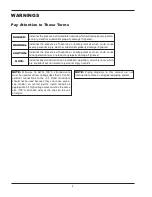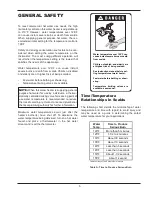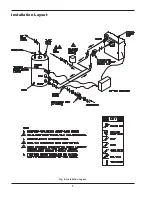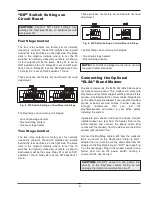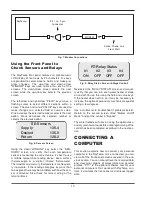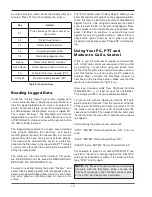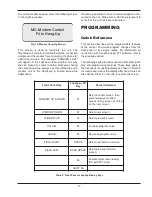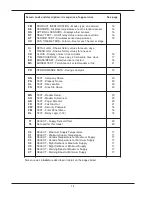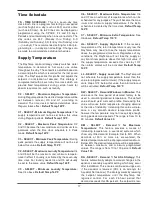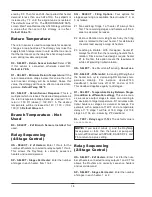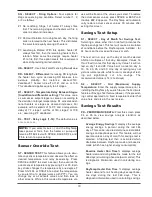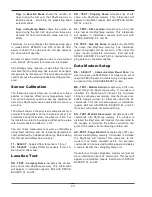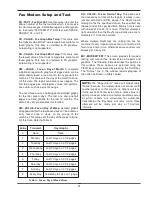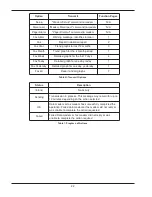
18
ered by 5°F. Then for each 24-hour period that heater
demand is less than one half of DA, the setpoint is
increased by 1°F until the original value is restored.
The default value is 70%. The PERFORMANCE DATA
screen titled Temp Reduced by ASL Strategy will show
a value other than zero if this strategy is in effect.
Default Value 70.
Return Temperature
The return sensor is used to compensate for seasonal
changes in loop heat loss. The strategy may raise the
supply/branch temperature in cold weather to ensure
that the last rooms on the loop have hot enough water
even during low demand periods.
R0 - SELECT - Return Sensor Installed:
Select YES
if this sensor is connected, otherwise select NO.
Default is YES.
R1 - SELECT - Minimum Return Temperature:
If the
return temperature drops below this value then the
return sensor strategy will be activated. Above this
value, the strategy will have no effect on desired tem-
perature.
Default Temp 108°F.
R2 - SELECT - Return Sensor Response:
This is a
multiplier which increases the desired temperature as
the return temperature drops. Example: desired = 130,
return = 100, R1 (above) = 102, R2 = 5. The desired
temperature will be increased to 140 = 130 + (102-
100) X 5.
Default Value is 1.
Branch Temperature - Not
Used
B0 - SELECT - # of Branch Sensors Installed:
Not
used.
Relay Sequencing
(4-Stage Control)
HS - SELECT - # of Heaters:
Enter 1 thru 4 for the
number of heaters connected to relay outputs 1 thru 4.
This allows the RayTemp to correctly sequence
heaters and record demand.
SP - SELECT - Stages Per Heater:
Enter the number
of stages in each heater, from 1 to 4.
SQ - SELECT - Firing Options:
Four options for
stage sequencing are available. Select number 1, 2, or
3 as follows:
#1 No Lead/Lag: Stage 1 of heater #1 always fires
first. The remaining stages and heaters will fire in
order as demand increases.
#2 24-Hour Rotation: At midnight each day, the firing
order is rotated to the next heater. This distributes
the work load equally among all heaters.
#3 Lead/Lag & Rotate: With this option, heater #1
always fires first, then the remaining heaters fire in
rotation. Since some flue designs require heater
#1 to fire first; this option meets this requirement
while still providing limited rotation.
US - SELECT
- Use 24volt on/off sensing.
Do not use.
DD - SELECT - Differential:
Increasing DD lengthens
the heater burn cycle; decreasing DD improves tem-
perature stability. For instance: desired=140,
deadband=1, heater turns off at 141 and on at 139.
This deadband applies equally to all stages.
D1 - SELECT - Temperature Delay Between Stages
(In addition to differential setting):
This value caus-
es successive output stages to come on according to
the deviation to target temperature. D1 activates addi-
tional heaters or stages as demand increases. For
example with a setpoint of 140°F and a temperature
delay of 1°F, stage 1 will fire at 140, stage 2 at 138,
stage 3 at 136, etc., assuming 2°F deadband.
RL - TEXT - Relay Logic (1-12):
The default value is
++++++++++++.
Relay Sequencing
(2-Stage Control)
HS - SELECT - # of Heaters:
Enter 1 or 2 for the num-
ber of heaters connected to relay outputs 1 and 2. This
allows the RayTemp to correctly sequence heaters
and record demand.
SP - SELECT - Stages Per Heater:
Enter the number
of stages in each heater, 1 or 2.
NOTE:
If you select minus (-) and the RayTemp
loses power or fails, then the heater or pump will
remain off!!! Edit text with SPACE, BACKSP, F4, and
F5 to return to a plus setting.

